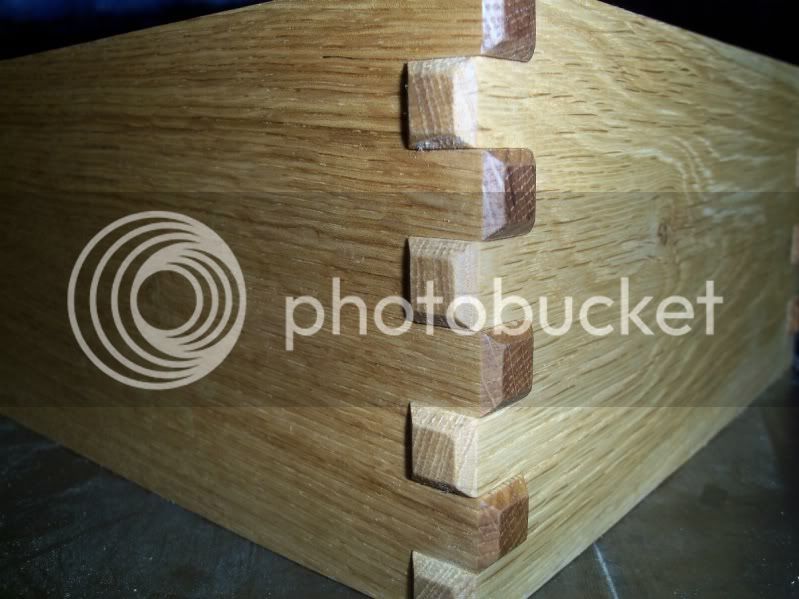Archimedes
Member
- Joined
- 16 May 2011
- Messages
- 18
- Reaction score
- 0
All
I have a question regarding cutting comb joints/finger joints/box joints or whatever you want to call them .
.
I am new to this woodworking shenanigins and I am making a 8" x 6" x 4" wooden box in walnut. I have been using offcuts to complete comb joints (by hand) as practice pieces before going ahead with the box. I am producing 'sort of' neat jointing (but not great - Evel Knievel offered to jump one of the gaps - at least he didn't decline :mrgreen: ).
I am using a marking knife to mark the lines (not a pencil) and using a dovetail saw to cut the pins (6 mm wide) and a 6 mm wide bevel edge chisel coming in from either side to chop out waste. My chisels Narex, the dovetail saw is a Lie Nielsen straight handled Dovetail saw and I have a Mitutoyo square for making sure that everything is all squared up. I use Veritas wheel marker across the piece to ensure the base of my cut does not wander off.
My question is: I am producing 'alright' joints but not super neat. I can't blame the tools (damn... :roll: ) and I don't rush. Any gems of wisdom to make my joints better or is it, as I suspect, just lots of practice until I can judge the feel of the saw, how hard to tap the chisel etc...
All thoughts appreciated.
Kind regards to all,
A
I have a question regarding cutting comb joints/finger joints/box joints or whatever you want to call them
I am new to this woodworking shenanigins and I am making a 8" x 6" x 4" wooden box in walnut. I have been using offcuts to complete comb joints (by hand) as practice pieces before going ahead with the box. I am producing 'sort of' neat jointing (but not great - Evel Knievel offered to jump one of the gaps - at least he didn't decline :mrgreen: ).
I am using a marking knife to mark the lines (not a pencil) and using a dovetail saw to cut the pins (6 mm wide) and a 6 mm wide bevel edge chisel coming in from either side to chop out waste. My chisels Narex, the dovetail saw is a Lie Nielsen straight handled Dovetail saw and I have a Mitutoyo square for making sure that everything is all squared up. I use Veritas wheel marker across the piece to ensure the base of my cut does not wander off.
My question is: I am producing 'alright' joints but not super neat. I can't blame the tools (damn... :roll: ) and I don't rush. Any gems of wisdom to make my joints better or is it, as I suspect, just lots of practice until I can judge the feel of the saw, how hard to tap the chisel etc...
All thoughts appreciated.
Kind regards to all,
A

































